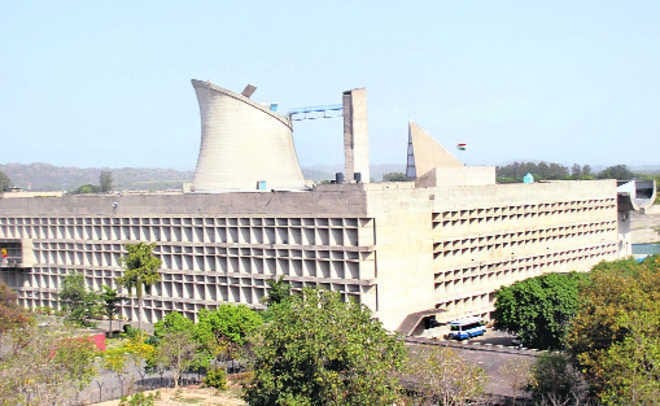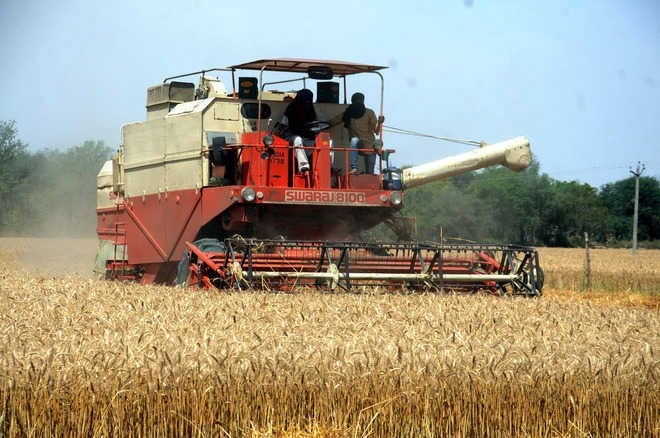The latest decision of the Charanjit Singh Channi Government in Punjab, seeking information from the Deputy Commissioners regarding land owners having more than the permissible area, under the land ceiling laws has stirred a new controversy. Although the contentious circular was withdrawn the very next day, it has brought into focus the content as well as administration of the surplus area laws, that were once regarded as vanguard of social economic justice in the State.
Land Reforms after Partition
In the pre-Partition Punjab, big and absentee landlords were a common phenomenon. Partition of the country, accompanied by unprecedented influx of displaced persons, triggered variety of land reform laws in the erstwhile states of East Punjab and PEPSU. These included, abolition of superior landowner titles, vesting of proprietary rights with occupancy tenants and consolidation of holdings.
This was followed by far-reaching tenancy reforms and both the states enacted laws that, apart from providing security of land tenure as to the tenants-at-will, also had very significant provisions dedicated to imposing ceiling of on landholdings. This process was continued and made more stringent with the Punjab Land Reforms Act, 1972 with Mrs Gandhi winning the General Election in 197, the liberation of Bangladesh, when Giani Zail Singh became the Chief Minister.
The new Surplus Area Law of 1973
The new law came into force retrospectively with effect from 24th of January, 1971 and placed a ceiling of 18 standards acres of first quality land in the hands of, not just the individual, but rather the family as a unit. No doubt, some small additional fractions of land were allowed to accommodate the adult sons, as on the appointed date but the overall land ceiling, even for unirrigated or semi-irrigated land was 25 acres. There were barely any exceptions like garden colonies and compact orchards etc., which has been had been grossly misutilised under the old laws.
The determination of the surplus area was left to the revenue officers at the level of Collector, with appeal to the Commissioner and revision petition to the Financial Commissioner. Thereafter, the aggrieved party, whether the land owner or the State, could invoke the jurisdiction of the High Court or the Supreme Court. The law, being a major of agrarian land reform, was placed in the Ninths Schedule of the Constitution of India, so that it could not be struck down as being in conflict with the Fundamental Rights. Its constitutional validity was upheld conclusively.
Lacunae in the Law
A number of surplus area cases were initiated. However, the actual surplus area that was finally utilised was exceedingly limited. This was on account of the following lacunae in the Act.
1. As per section 8 of the Act, the surplus area vested in the state only when the Collector took over possession. Normally, in the appeal or revisional stage, stay orders were granted and given the normal time-frame for a final judicial adjudication right up to the Apex Court, the big landowners would have perhaps died and thus the surplus area read determined, as on the date of death, afresh in the hands of the legal hairs. Owing to division of land, usually no surplus area would remain.
2. The Act (section 7(4)) merely stated that transactions such as sale, gift decrees that operated to reduce the land in the hands of the big landowner were to be ignored in the determination of the surplus area. It did not explicitly state that these were null and void ab initio. Thus, alienation by sale etc. to third parties continued and they subsequently not only sought benefit as bonafide vendees but also became parties to the litigation. This also led to litigation inter se big landowners and the transferees and legal disputes arose as to which particular parcel of land should be declared surplus.
3. The Act and the statutory scheme framed under it provided that before the surplus land was redistributed to landless persons belonging to the Scheduled Caste (SC) landless residing in the village, the rights of the sitting tenant had to be determined. Many big landowners set up collusive tenants and when the area was finally declared surplus, it ended up being allotted to their own, collusive tenant, thereby defeating the very purpose of the entire proceedings.
4. In rare cases, where the land was allotted to landless SC persons, the Act provided that they could not alienate for a period of 15 years, after the issuance of the conveyance deed. Usually, no such entry regarding bar on alienation was made in the revenue record, as a result of which most of these people ended up prematurely selling the allotted land, often to the nominees of the original landowner, at throw-away prices.
Impediment to Development?
Decades later, when promoters began to assemble/purchase huge parcels of land for urban development or institutional purposes such as integrated townships and private universities, this ceiling law posed a major hindrance. Some of them incorporated separate legal entities to circumvent the provisions. The instructions regarding “change of land use” (CLU) provided that ownership had to vest in the applicant, before the application could be allowed, thus creating a Catch-22 situation.
In December 2017, this Act was retrospectively amended to provide for an exemption where land in excess of the permissible area had been or was to be accumulated by single legal entity, for purposes other than agricultural, such as industrial, institutional or commercial. An easy self-certification and intimation to the Collector process was provided. Thus, for all intents and purposes, agricultural land that was sought to be converted to non-agricultural use came out of the purview of the ceiling law.
Utilization of Surplus Area
The utilization of the surplus area, if any, finally declared is expected to be effected in accordance with the “Punjab Utilization of Surplus Area Scheme,1973.” This provides for the allotment of the land declared to be surplus to the sitting tenants (as on the appointed date) and thereafter to persons belonging to the Scheduled Castes and being residents of the village. The condition is that they should not own more than 2 hectares of land and their overall holding, after allotment, should not exceed 2 hectares.
In many cases, the surplus land, although agricultural in nature in narrow legal terms is situated in the periphery of major cities, including Chandigarh and in case of Haryana, which has a similar law/ scheme in the NCR. The Punjab Scheme does not permit utilization of this land for any ”public purpose” by the State Government. It is felt that this Scheme should be amended to to permit this, otherwise, ultra-valuable land shall be frittered away to allottees, who will still technically claim to be “small/ marginal farmer.”
New Land Leasing Bill
In the year 2018–19, the Punjab Government was toying with the idea of bringing about the Punjab Land Leasing Bill, 2018. Inter alia, it provided that companies taking huge chunks of land on 30-year lease from the small farmers would not be hit by the provisions of the ceiling laws. Otherwise, even a tenant cannot hold more than the permissible area under the extant provisions of the Punjab Land Reforms Act, 1972. Owing to the COVID restrictions and subsequently the Kisan agitation, this Bill did not see the light of the day, although it is still alive on the Punjab Government website.
Big landowners who have managed separate units for their sons and adult grandsons are using devious devices such as registered/ unregistered wills from the grandparents to other nominees outside the immediate family. Thus, in spite of all the safeguards, you do have kinnow garden/orchards held by influential families, running into hundreds of acres.
Time to give it a decent burial?
It does not seem politically correct for any political party to state that the land ceiling law needs to be scrapped. However I feel, it is merely a fig-leaf and it can potentially become an instrument of harassment in the hands of entrepreneurs who want to buy land in Punjab for bonafide non-agricultural purposes. It also does not deter people with deep pockets from incorporating different private limited companies and setting up different units, owning agricultural land. The surplus area proceedings of agro-forestry firms that had bought huge tracts of land using public deposits are still locked up in litigation.
Without prejudice to the pending proceedings, I think time has come for us to give this law a decent burial so that at least prospectively larger holdings can be created for efficient use of scarce agricultural land in Punjab.
POST SCRIPT:
After this article was published, interesting comments were received.
A Haryana-cadre IAS officer (batch-mate), who retired recently stated:
“I agree, this law is being grossly misused, especially in districts of NCR where so called landless manage to grab precious land while Government is unable to acquire land.. we must also think if scrapping the land ceiling laws and at least stop allotting precious land to the so-called landless, who will first get the surplus land, and then being marginal farmers, claim Kissan Samman Pension all their lives…for nothing…”
2. A Rajasthan-cadre IAS officer (batch-mate), who retired recently similarly stated:
“Your proposition is fully logical as the law hasn’t been of any significant use. But at the same time, no lawmaker will be ready to touch this issue, especially when the farmers have a feeling that they might get alienated from their lands. I don’t think the Punjab Land Leasing Bill too can be revived in immediate future.
The land ceiling act, the spirit behind it, never took off as there were many loopholes. Following Vinoba Bhave’s call, to earn browny points, certain ‘progressive’ landlords gave away their ‘surplus’ lands but most of the donated lands could barely be put to agricultural use.
Scrapping the law may to not serve any purpose like its enactment. The Party venturing to initiate this will get less credit for getting rid of old laws (as Modi Government claimed to do with about 150 laws) than discredit for being labelled anti-poor and reactionary.”
3. Follow the link below to my Facebook post. Some interesting comments there.
<iframe src=”https://www.facebook.com/plugins/post.php?href=https%3A%2F%2Fwww.facebook.com%2Fkbs.sidhu%2Fposts%2F10158998934697779&show_text=true&width=500" width=”500" height=”512" style=”border:none;overflow:hidden” scrolling=”no” frameborder=”0" allowfullscreen=”true” allow=”autoplay; clipboard-write; encrypted-media; picture-in-picture; web-share”></iframe>
4. Follow the link below to my Twitter handle. Some interesting comments there.
https://twitter.com/kbssidhu1961/status/1436375537371389953?s=20
_________________________________________________________________
KBS Sidhu. The Author is an ex-IAS officer of 1984 Batch of Punjab cadre. The views expressed are his own.
He can be reached on kbs.sidhu@gmail.com or @kbssidhu1961 or https://www.facebook.com/kbs.sidhu







